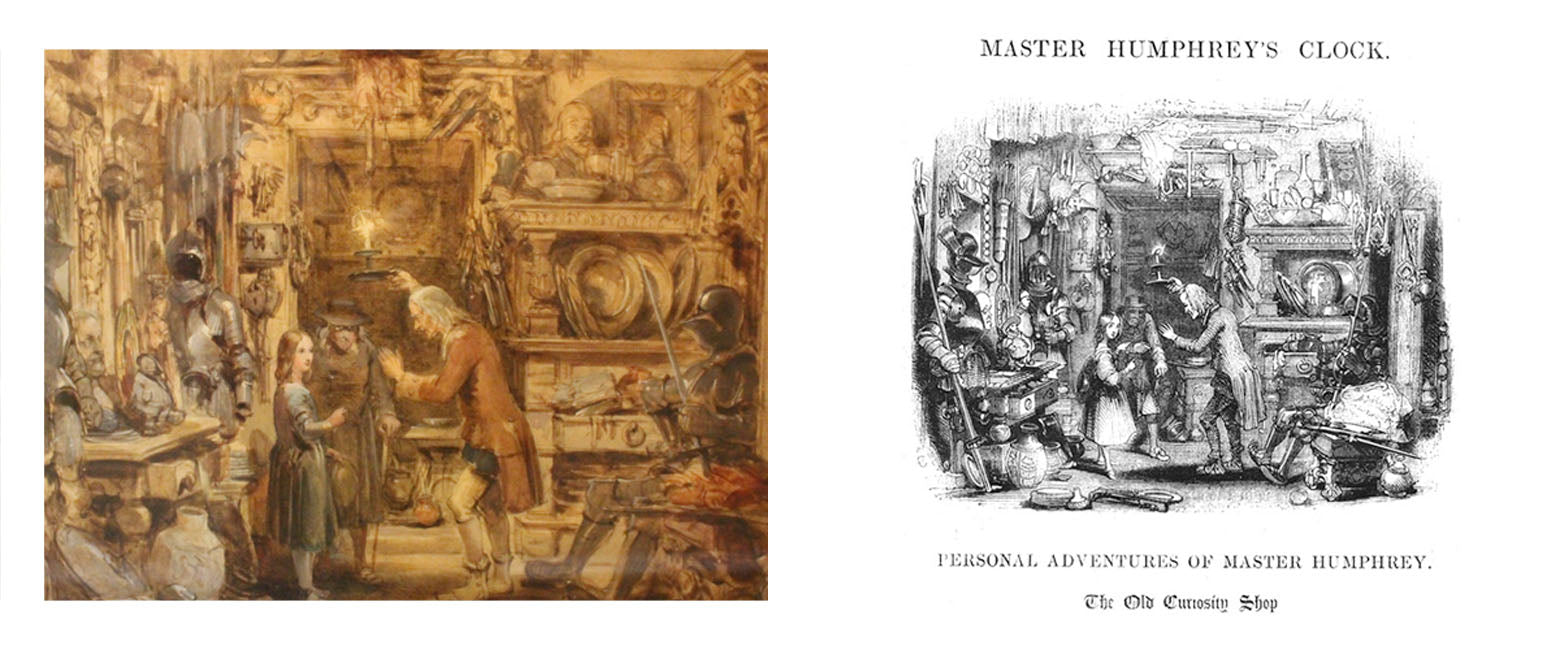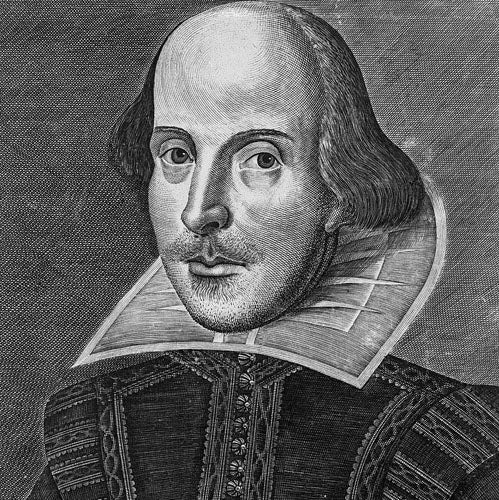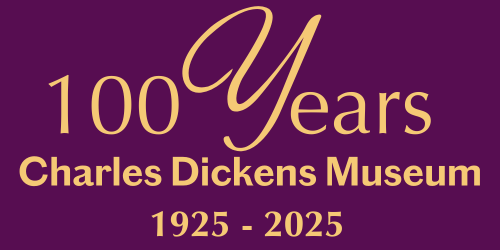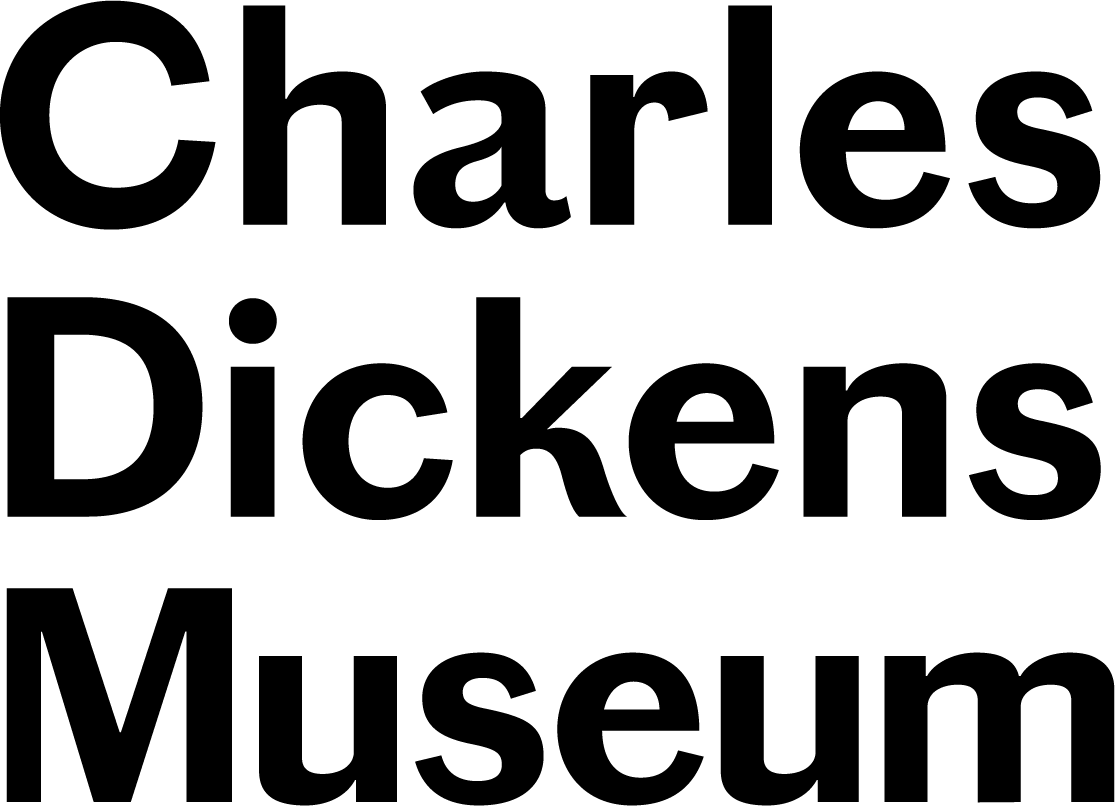A hidden tribute to Shakespeare
Denis Moiseev is collections intern at the Charles Dickens Museum and is completing his MA in the History of Art at Birkbeck, University of London. The internship was made possible with support from NADFAS.
By Denis Moiseev

George Cattermole’s Little Nell’s Home (1840) & Little Nell Engraving from Master Humphrey's Clock (1840)
It is rare for a country to celebrate the life of an individual who died four centuries ago, but in the case of William Shakespeare, 2016 marks just such an event. The anniversary celebrations are a testament to Shakespeare’s enduring popularity and his impact on the English language and literature. Although here at the Museum we focus on another literary idol, it is generally acknowledged that Charles Dickens had a thorough knowledge of the playwright’s writing. Dickens frequently imitated, occasionally parodied and even adapted Shakespeare’s works, so much so that he was compared to The Bard on numerous occasions.

Details of George Cattermole’s Little Nell’s Home (1840)
We have recently begun cataloguing and researching the artworks in the Museum’s collection and have stumbled across a little discovery that links the two literary giants. In the entrance hallway, the very first painting you come across is George Cattermole’s Little Nell’s Home (1840). It is a beautiful watercolour illustrating a passage from The Old Curiosity Shop, a novel serialised in Master Humphrey's Clock from 1840 to 1841. The composition is based on an engraving from the original series, produced by the same artist, where Nell is depicted with her grandfather in the interior of her home; however, a comparison between the two indicates that there are distinct departures from the engravings. For example, there have been notable additions: a bust on the stacked table towards the back, and on the ceiling above the door, a head of Christ with a small cross. Interestingly, the bust’s hair and facial features seem to resemble the Droeshout portrait of Shakespeare. The similarity between Shakespeare and the bust is confirmed by the editors of the Pilgrim edition of The Letters of Charles Dickens and demonstrates Cattermole’s keen knowledge of Dickens’s interests.

Droeshout's Portrait of Shakespeare
Cattermole had a good working relationship with Dickens having been asked to collaborate with Daniel Maclise and Hablot Browne on the illustrations for The Old Curiosity Shop. Scholars have, therefore, previously assumed that the painting, together with its companion piece, The Grave of Little Nell (held at the V&A) formed a commission from Dickens; however, no primary sources seem to allude to this being the case. Furthermore, no payment to Cattermole is recorded in Dickens’s accounts in the 18 months after the painting was received, perhaps indicating that the pictures were actually gifts.

George Cattermole's The Grave of Little Nell (1867)
Whatever the reason for their creation, Dickens was extremely happy to have had them given to him. In a letter to Cattermole dated 20 December 1842, he declared that, ‘It is impossible for me to tell you how greatly I am charmed with those beautiful pictures, in which the whole feeling and thought and expression of the little story is rendered to the gratification of my inmost heart; and on which you have lavished those amazing resources of yours with a power at which I fairly wondered when I sat down yesterday before them.’ One has to wonder whether Dickens noticed the addition of Shakespeare’s bust. The links between Dickens’s writing and Shakespeare are well documented; however, it is rare for an image connected the two writers to come to light.

